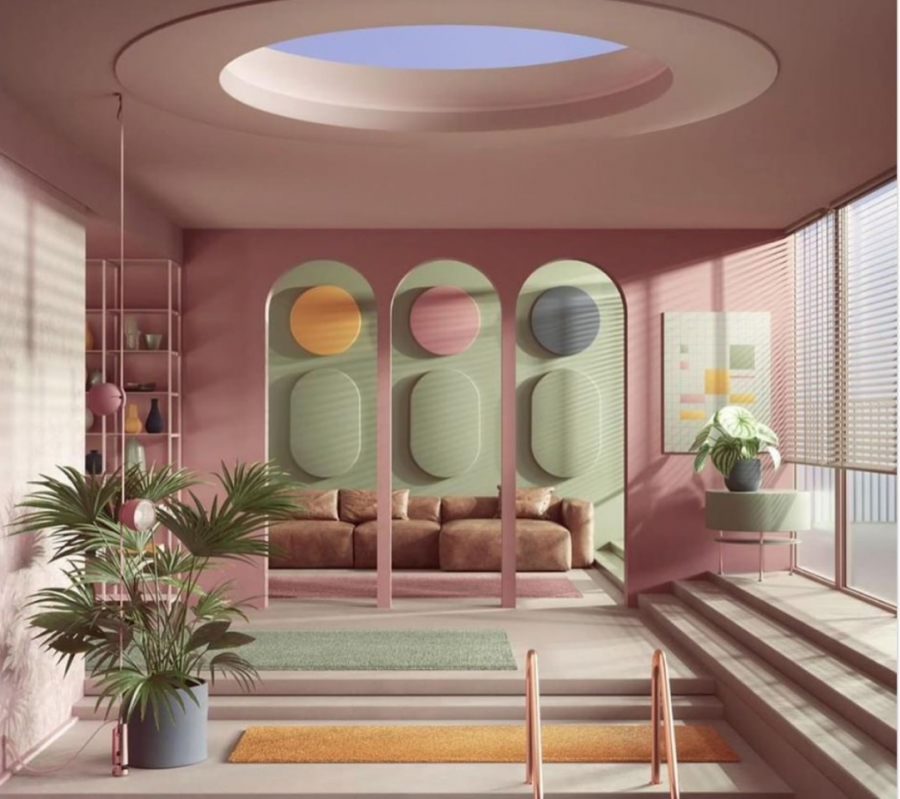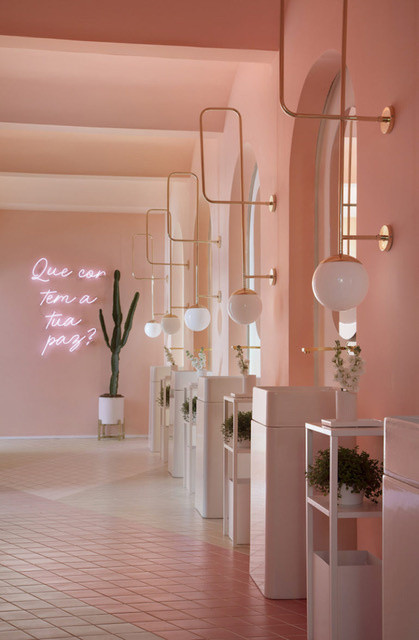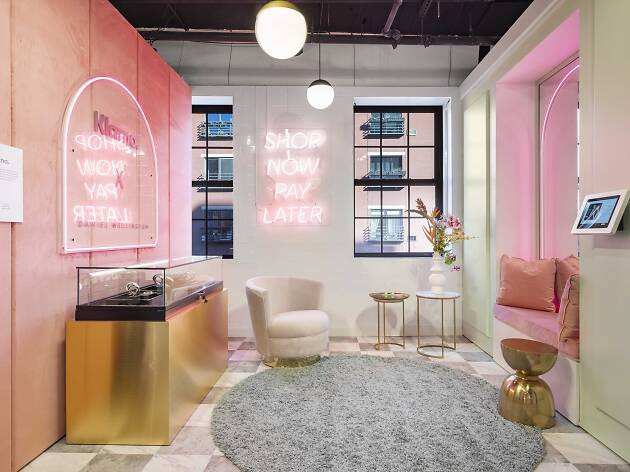How is a Store Designed : Pt. 1

Today more than ever it is important to create retail spaces that are designed in a way that is not only safe, but promotes a hassle-free and enjoyable experience.
Whilst the essence of a retail space is to sell, the goods and services aren’t always a necessity and as such, in many cases shoppers need to be drawn in, or encouraged to enter. Now that non-essential retail has re-opened, this has never been more relevant than today - we cannot be complacent and merely expect shoppers to return and resume normal shopper behaviour.
We have become all too familiar with ‘shopping for pleasure’ but for the last few months only essential shops have been allowed to open, for everything else we resorted to online retailers, and this is likely to profoundly effect on the shopper psyche.
Prior to the current pandemic we were already seeing the power of ‘aware’ shoppers who voted with their feet - shoppers who weren’t attracted by cheap prices but instead valued non-monetary factors such as provenance or good environmental or ethical practices, or ones who favoured the comparative ease of online shopping and only used physical shops for ‘showrooming’. Retailers were quick to blame declining sales on the death of the high street and the rise of e-commerce rather than questioning why shoppers were abandoning them, they weren’t critiquing themselves and identifying contributing factors such as dated or ineffectual store concept and doing something about it.
Human beings are visual, one of the most basic and cost effective VM tactics is a new store layout, research shows that regular passing trade will notice this change - take advantage of this and you stand the greatest chance of drawing them in.
We at Northbanks know that successful retail design or a great store concept increases footfall. Successful Retail Design is about creating a customer experience. It gives them a reason to cross the threshold, it guides a shopper’s interaction with the retail space, it entertains as well as entices, it encourages browsing and converts it into buying. Research has shown that shoppers buy with their heart and justify with their head - 95% of decisions are based upon emotion and 5% are based upon rational decisions.
“If shopping doesn't make you happy, then you're in the wrong shop”
Northbanks is passionate about creating shopper experiences that better brands.
We want to share why Store Design is so important to retailers and in this mini-series, we’ll touch upon how it can be conceived, factors that might influence it and, how and where this might come from…
Why is the Store Concept so important?
Put simply, it is the canvas to the goods or services in the store, but it’s more than that, it ties everything together, it must be the best representation and the best possible environment to reflect the brand and relate with the target consumer group.
Great store design echoes, reinforces and resonates with the brand story, the ethos and the demographics i.e. the shoppers.
The store interior design tells a story, it’s an extension of the brand personality, it’s the visual identity communicated to the customers, and first impressions count.
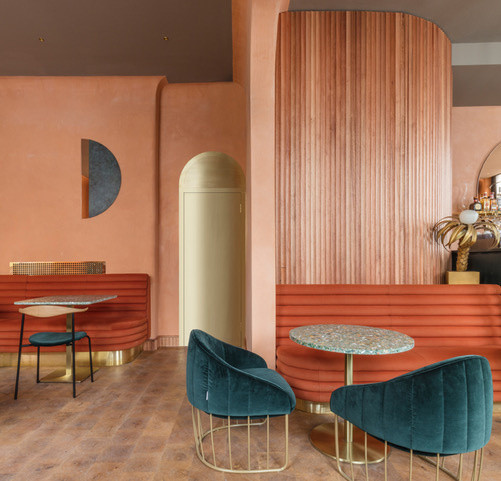
When developing a physical store concept, the technical requirements of selling and displaying can be executed in unlimited ways. Many individual design elements and aspects need to be considered to create the overall store concept – the interior fit out, the floor, wall, ceiling and lighting design etc, to name a few, can be any number of styles. The fixtures and furniture that display and promote the product are hugely important; how flexible it is and how functional are key, but so are the materials, finishes and execution.
Retail and Retail Design is hugely interactive, designing a store is a well thought out and complex process, arguably more so than residential or commercial interior design which are only concerned with ‘living’ or ‘working’ environments. There are only ever two starting points for the interior aesthetic; an existing brand formula, or a new one. Some relish the challenge of developing an existing one. Whilst others might find New Concept projects more exciting, citing originality as the holy grail for design agencies – we at Northbanks love both!
A sometimes frowned upon approach is to mimic other brands, or adopt certain design cues - after all, imitation is the sincerest form of flattery... This might be a starting point for some retailers who find it beneficial to be closely associated with a highly recognisable and successful brand in order to attract or poach their customer.
There are many approaches to the creative process and conceiving of a creative direction, we want to start with one that is popular at the moment and is particularly relevant to aspirational or lifestyle brands: interior design trends led.
Retail is just one part of a customer’s life - a lifestyle approach to retail design looks at other areas of the customer, how and where they live, where they go on holiday or to socialise, what they value and put importance on, how they aspire to live and what styles they may associate with.
Knowing and understanding the target demographic is essential to focusing on the interior design style that best suits the retailer. The key is mirroring the brand identity with that of their customers. This is often why brand concepts are not always consistent between the shops and often change. They are creating an environment that inspires their customers whilst constantly trying to stay one step ahead of their competition. Store design can explore different angles of the same design story. An analogy would be that of someone with multiple homes, would they all look the same? It’s likely each one would be adapted to the location and environment they are in. Layered on top of this is the visual identity and personality of the retailer or brand. Here is where consistency might be desired to reinforce brand recognition. The brand’s strategy will dictate whether they choose individuality or consistency. However, in the age of discerning shoppers the days of a one size fits all store design is long gone.
Successful brands and retailers combine their brand DNA with design trends and their customers’ aspirations, tastes and expectations.
An example of this, is our partnership with renowned London based jewelry brand Astrid & Miyu to create their new completely Instagrammable permanent store at 31 Neal Street in Seven Dials, Covent Garden.
The store has been created with the same passion and quality as Astrid & Miyu’s products themselves - by harmonising colours and textures, using soft blush tones, minimalistic materials and contrasting neon signs, we have created a chic and lux, yet understated interior, that is in tune with their brand identity and ethos, and that of their followers.
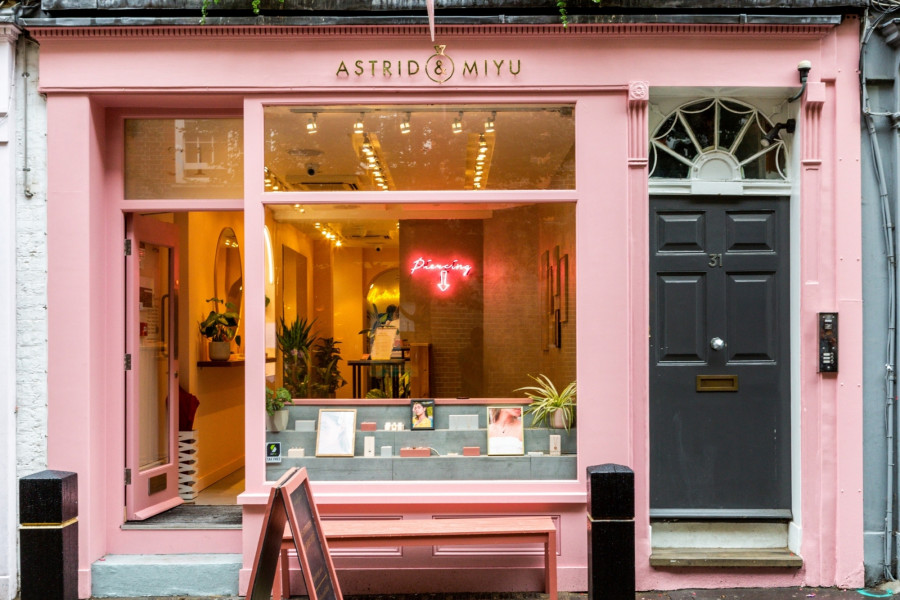
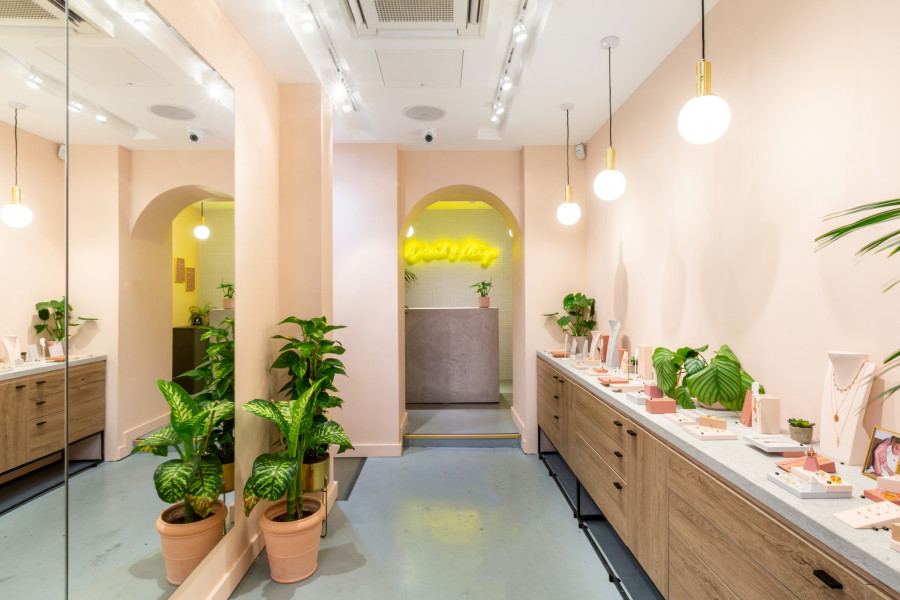
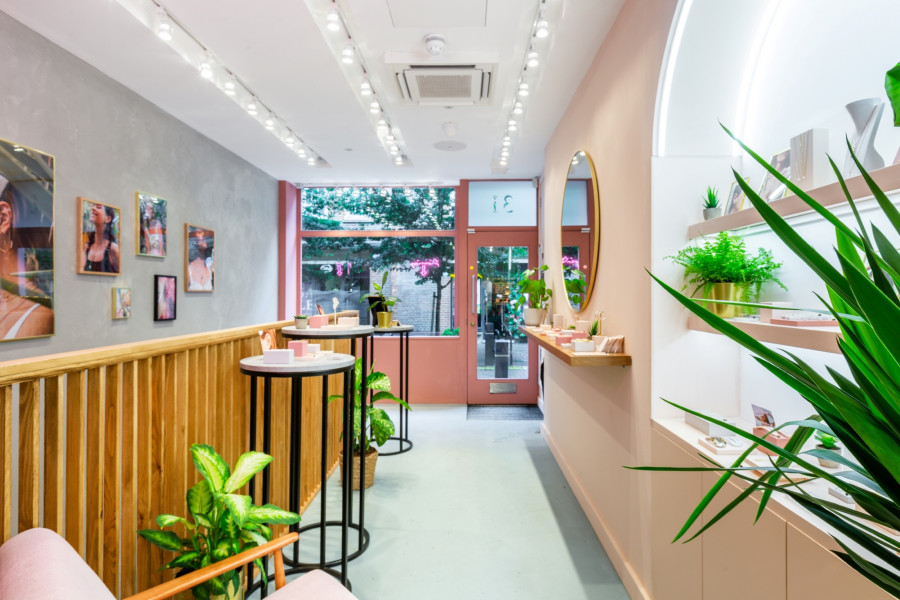
The use of pink, round arches, neon, plants simple geometric design is a design trend in both residential and commercial environments as you can see in the images below.
We definitely think this trend will continue to influence the design of their future retail stores.
